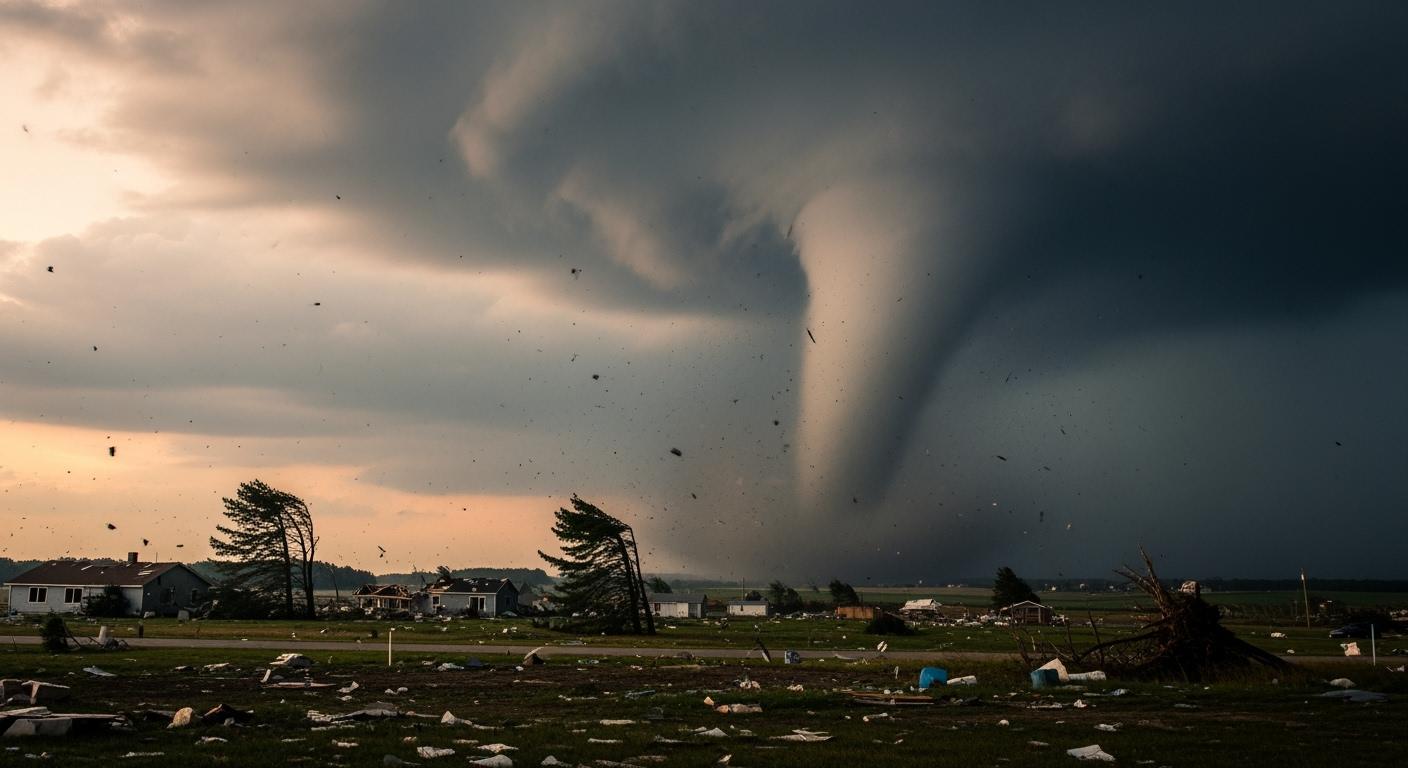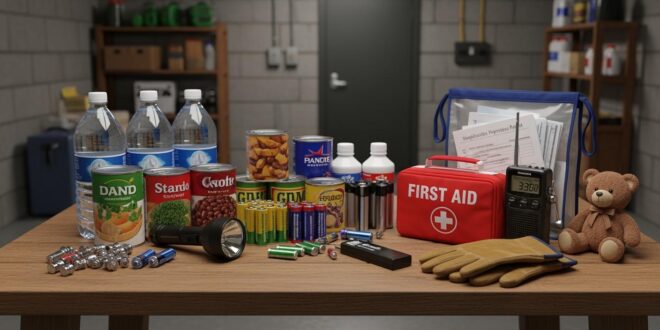When the sky darkens, the wind starts to howl, and tornado warnings blare across your phone or TV, the last thing you want to do is scramble for supplies. That is why having a tornado preparedness kit ready, stocked, and easy to access can make all the difference. Tornadoes are fast moving, unpredictable, and can strike with little warning. In these moments, preparation is not just smart, it is essential. This guide will walk you through everything you need to know about building the ultimate tornado preparedness kit, why it matters, what to include, and how to keep your loved ones safe.
Why You Need a Tornado Preparedness Kit Now
Tornadoes are among nature’s most violent storms, capable of destroying homes, flipping cars, and leaving communities devastated in just minutes. Every year, thousands of tornadoes touch down in the United States alone. While modern meteorology has improved warning times, most people still have only minutes to react. That is why the smartest families and communities always keep a tornado preparedness kit on hand (FEMA).
Emergencies do not wait for convenience, and you cannot count on power, water, or even cell service after a tornado passes through. The right tornado preparedness kit ensures you have life’s essentials close at hand, no matter how chaotic things become.

What is a Tornado Preparedness Kit?
A tornado preparedness kit is a carefully organized collection of supplies and documents designed to help you survive the immediate aftermath of a tornado. Think of it as your family’s safety net, a collection of essentials you may need if you lose power, shelter, or access to basic resources.
This kit can be stored in your home, your car, or even your workplace. The best kits are portable, in a backpack or sturdy container, easy to carry, and simple to grab if you need to head to a basement, interior room, or storm shelter in a hurry.
Tornado Preparedness Kit Checklist
Ready to build your own tornado preparedness kit? Here is a checklist of must-have items. Customize it for your family’s unique needs.
1. Water and Food
One gallon of water per person per day (at least a three day supply)
Non-perishable, ready-to-eat food such as granola bars, canned goods, dried fruit, peanut butter
Manual can opener
2. Safety and Survival Gear
Battery powered or hand crank weather radio (NOAA)
Flashlights with extra batteries
First aid kit with bandages, antiseptics, medications
Whistle to signal for help
Sturdy shoes or boots
Heavy duty work gloves
Multi tool or Swiss Army knife
3. Personal Items
Copies of important documents such as IDs, insurance, medical records in a waterproof bag
Cell phone charger and portable power bank
Prescription medications and glasses
Extra cash as ATMs and cards may not work
Hygiene supplies such as toothbrush, toothpaste, moist wipes, hand sanitizer, feminine products
Emergency contact list
4. Comfort and Warmth
Blankets or sleeping bags
Change of clothes including rain gear
Emergency thermal blankets
Small toys or games for children
5. Special Needs and Pets
Baby supplies such as diapers, formula, bottles
Pet food, leash, crate, and vaccination records
Mobility aids or extra hearing aid batteries
6. Optional, but Highly Recommended
Dust masks or N95 respirators
Plastic sheeting and duct tape for emergency shelter or patching windows
Local maps
Notepad and pen
TIP: Store your tornado preparedness kit in a container that is easy to carry, clearly labeled, and kept in your designated safe room, basement, or storm shelter.
How to Store and Maintain Your Tornado Preparedness Kit
Your tornado preparedness kit will only help you if it is up to date and easy to reach. Here are a few best practices.
Location is key. Keep your kit in your home’s designated storm shelter, basement, or interior room. If you have a multi level home, consider placing smaller kits on each floor.
Review your kit every six months. Check expiration dates, replace old food and water, and update medications or important documents.
Make sure every family member knows where the kit is and can access it quickly.
Tornadoes can strike while you are on the road or at work. Keep a small tornado preparedness kit in your car and another at your desk if you live in a tornado prone area.
Common Mistakes to Avoid
Building a tornado preparedness kit is easy to put off and even easier to get wrong. Here are some of the most common pitfalls.
Waiting until severe weather season to get started. Kits should be ready year round.
Forgetting batteries or chargers for crucial gear like radios and flashlights
Overlooking pet needs or supplies for infants and seniors
Storing the kit in a hard to reach or unsafe location
Relying on your smartphone for alerts and contact info without backup
DIY vs. Pre-Made Tornado Preparedness Kits: Which is Best?
Should you buy a pre made tornado preparedness kit or build your own? Here is what to consider.
DIY Kits:
Completely customized for your family’s needs and lets you pick the brands and quality you trust. Often more comprehensive.
Takes more time and planning. You must track expiration dates and rotate stock.
Pre Made Kits:
Convenient and fast, often packaged in easy to carry bags. A good starting point if you are short on time.
Can be more expensive. May lack specific items for your family. Often includes lower quality gear.
Best Approach: Start with a high quality pre made tornado preparedness kit if you need to, but always supplement it with personal items, extra food and water, and gear for children, pets, or anyone with special needs.
Bonus Tips for Families, Kids, and Pets
Practice tornado drills with your family. Make sure everyone knows how to use the kit and where to go.
Include comfort items for children, such as a favorite stuffed animal or book.
Prepare identification tags for pets, and keep leashes and carriers ready.
For elderly family members or those with mobility challenges, create a step by step emergency plan that works for their abilities.
Practice tornado drills with your family and make sure everyone knows how to use the kit and where to go. For family-specific checklists and advice, refer to the American Red Cross family safety tips.
Frequently Asked Questions About Tornado Preparedness Kits
How often should I update my tornado preparedness kit?
Check your kit twice a year, replacing expired food, water, and medications.
Where should I keep my tornado preparedness kit?
Store your kit in your safest shelter area, typically a basement, interior bathroom, or purpose built storm shelter.
What is the most overlooked item in a tornado preparedness kit?
Many forget about cash, pet supplies, or copies of vital documents. These can make a huge difference in the aftermath of a disaster.
Should every family member have their own kit?
It is smart to have a main family kit and smaller go bags for each member, especially for children or elderly adults.
No one can predict exactly when or where the next tornado will strike, but you can choose to be ready. A well stocked, thoughtfully assembled tornado preparedness kit gives you peace of mind and a plan—two things that save lives when seconds count. Whether you build your kit from scratch or buy a pre made version and customize it, the most important step is to start today. The safety of your family is worth it.
 Survive Our Collapse Building Self-Reliance in an Uncertain World
Survive Our Collapse Building Self-Reliance in an Uncertain World




